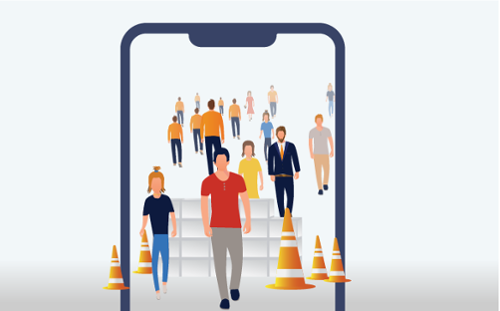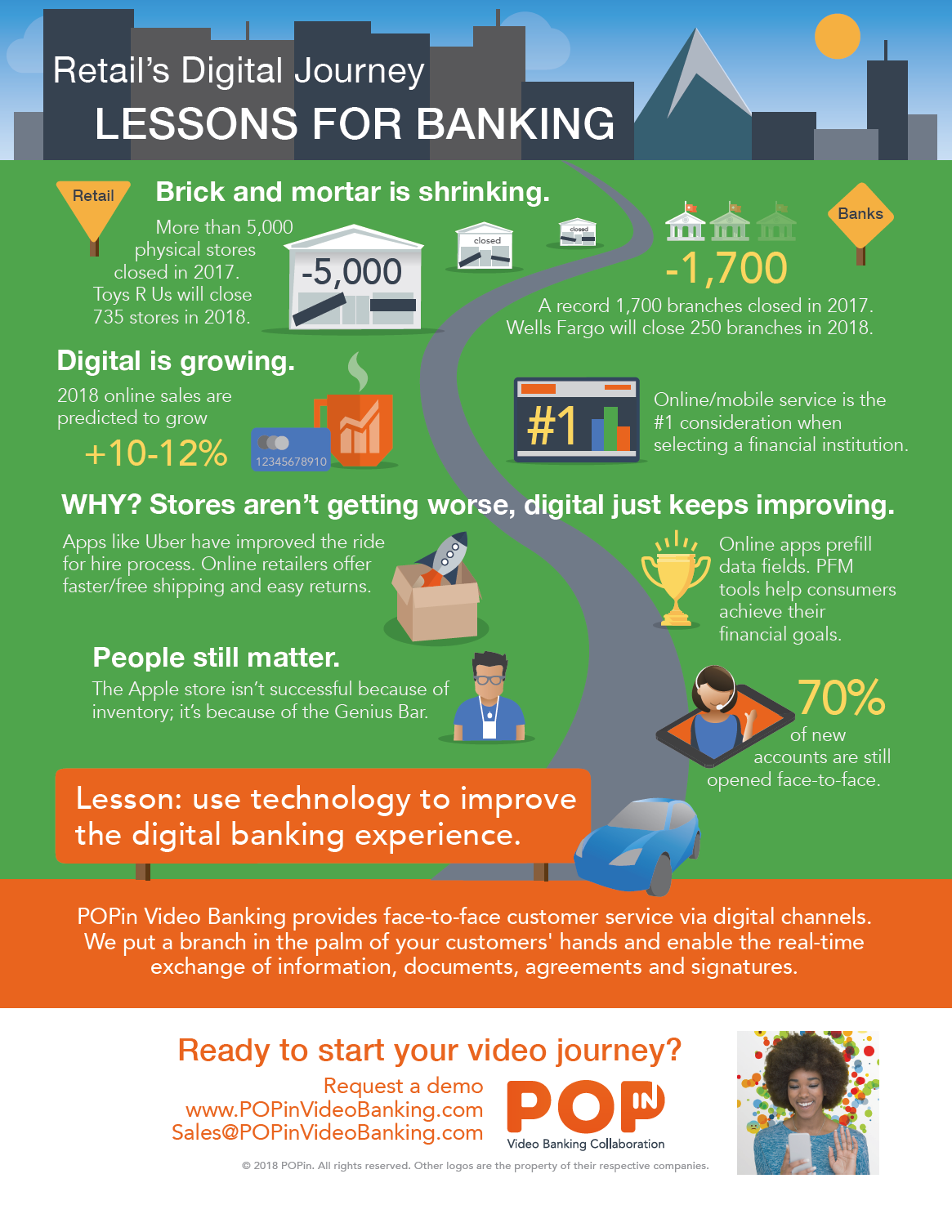The pandemic has tested all of us. We’ve all changed our lives, our ways of doing business, the dynamics of our relationships, and more. For many of us, these changes have presented new challenges that have tested our patience and forced us to make sacrifices. For some of us, the cost has been far greater than an inconvenience or a missed opportunity.
And now, a full two years after this all began, the COVID infection rate in the US is the highest it’s ever been. In-person appointments are being cancelled, remote work is being enacted (or reenacted), and Financial Institutions (FIs) across the country are rolling out digital platforms to serve their customers outside the branch.
These are a few of the reasons why Digital Communications is more important than ever before. With POPi/o, your FI can deliver all your personalized, branch-based services through convenient digital channels, allowing your team to safely serve customers in a convenient and cost-effective way.
Staffing Struggles
Allowing banks and credit unions to operate safely in the midst of COVID surges is only one of the ways a Digital Communications platform could help your institution navigate the current landscape. Because, along with surges, many FIs are also facing serious staffing issues. According to The Financial Brand, 80% of community banks and credit unions believe their biggest concern going into 2022 is staffing. Many branches are staffed with only one or two employees, and some are limited to drive-thru-only service.
With such limited access and so few experts to serve their customers, it’s become hard for FIs to operate efficiently. Opportunities are lost, call centers are overloaded, and product experts are underutilized. But with an effective digital platform, your FI can serve a broad customer base, even with scaled-back staffing.
Lending officers and other experts can work remotely or from a centralized location, eliminating the need to staff branches with all your product specialists. And with the integration of an AI assistant for simple customer service inquiries, you can lessen the workload for your call centers.
Digital Strategy
An effective digital strategy can not only act as a safety net from staffing struggles and COVID surges, but can also provide added benefits and new opportunities. Centralized lending departments can be enacted to make services more efficient than ever before. Expanded service hours are made possible through serving customers outside the branch. And everything from simple interactions to detailed, branch-based processes can be driven through convenient digital channels.
In an unpredictable world, FIs still need a reliable way to service customer relationships and deliver personalized services. With a Digital Communications platform from POPi/o, your FI has all the tools it needs to stay ahead of the curve—no matter what comes your way.
Ready to learn more? Let’s talk.













